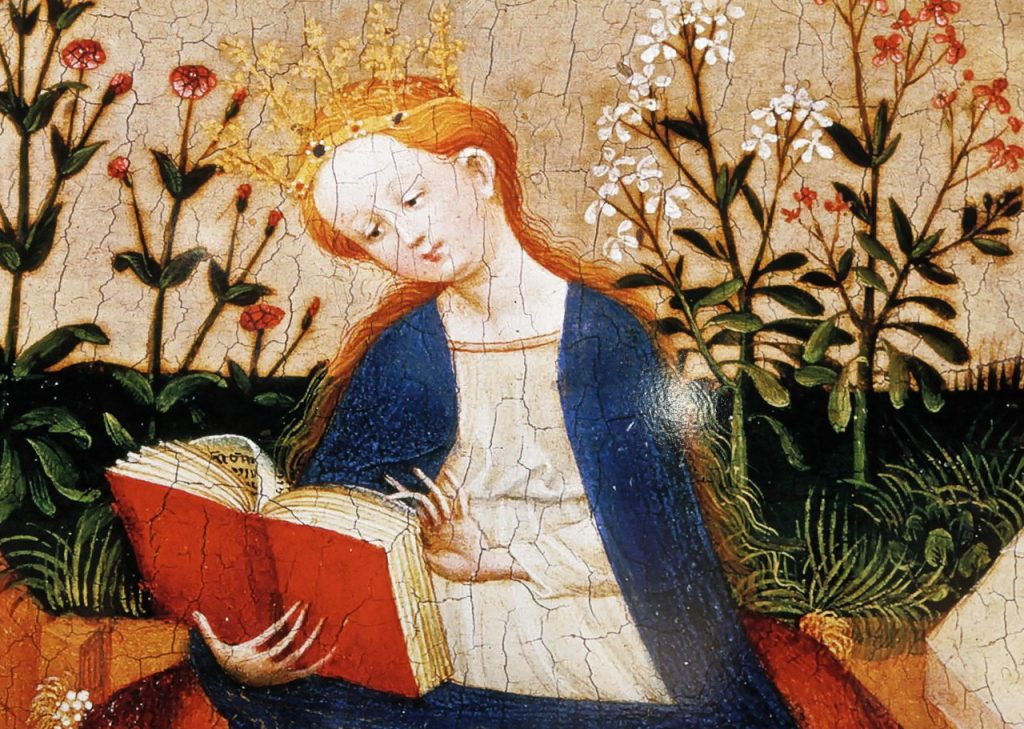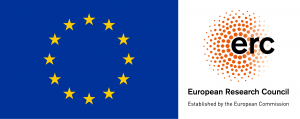Cfp – “Flowers of the Soul. The Symbolism of Flowers in the Religious Imagination” (special issue of “Ocula”, journal of semiotics)
“Ocula”, journal of semiotics, launches the new call for papers for a special issue of its: Flowers of the soul. The symbolism of flowers in the religious imagination.
The issue will be edited by Francesco Galofaro, semiotician, and Marco Papasidero, historian of Christianity.
The call for papers is available here.

Flowers of the soul: The symbolism of flowers in the religious imagination
In different religious traditions, flowers, and more generally the plant world, were used as symbols of spiritual meanings. For example,
we can think to Saint Rita’s roses, the violet with which Saint Teresa of Lisieux loved to identify herself, or the “litanies of the flowers”, in
which flowers of the most diverse species are invoked as so many sacred epithets. In this multidisciplinary issue of Ocula, experts in semiotics, history, philosophy, literature, will analyze concrete examples of this
symbolism, reflecting on the values and functions that the plant world has in the religious imagination.
Our call for paper aims at offering a reflection on:
– Therapeutic uses of plants over the centuries in the religious tradition;
– Diachronic change of the relationship between religious and floral imagery;
– Presence of floral and vegetable figures in religious literature;
– Flowers and plants in sacred art;
– Relationship between the botanical-religious imagery and epistemology.
The idea of this issue of Ocula was born within the ERC NeMoSanctI project (New Models of Sanctity in Italy (1960s-2000s) – A Semiotic
Analysis of Norms, Causes of Saints, Hagiography, and Narratives. The project is based at University of Torino – principal investigator Prof.
Jenny Ponzo.
General Information
– The acceptance of the articles and their publication is subject to double blind peer review.
– The Authors can find all the editing and format rules at the page ”Come si collabora” – “How to contribute to Ocula”, on the home page.
Please read it carefully and follow the recommendations.
– There are no official limits of length to the articles, yet we recommend 40.000 characters as a reasonable maximum measure (including
spaces, notes and references).
– Files format accepted are .doc, docx, .odt.
– The articles may include any kind of images.
– Images (photographies, graphs, tables) must be included in the main text file and submitted each as a separate file, in .jpg, .png, .tif,
.eps, .psd formats.
– The Authors must send their contribution in two versions: one in anonymous form, to be sent to the reviewers, and the other containing
name, position, email, website, biographic notes. Each version must be a separate file.
– In the anonymous file, in any reference to the Author’s publications the name must be cancelled and replaced by ”Author” and the titles
by ”Title of the publication”. The date must be let visible.
– Please, add an abstract of the paper.
Deadlines
– Abstracts Proposal: July 30th, 2019.
– Submission of the essays: December 15th, 2019.
– Notification of acceptance, rejection or revision request: March 15th, 2020
– Scheduled Publication: June 30th, 2020
– Accepted languages: Italian, English
Abstracts and articles must be sent to
– redazione(;-)ocula.it
– Marco Papasidero: marco.papasidero(;-)unito.it
– Francesco Galofaro: galofaro_francesco(;-)hotmail.com
References
– Bastide, F. Exploration du ‘Croire’ dans le domaine scientifique, Rimini: Guaraldi
– Courtés, J. ‘Dal folclore alla mitologia: a proposito di alcuni elementi folclorici: motivo e cliché’, in Del Ninno (ed.) Etnosemiotica: questioni di metodo, Roma, Meltemi
– De Certeau, M. 1981, Croire: une pratique de la différence, Documenti di lavoro del Centro Internazionale di Semiotica e Linguistica di Urbino, num. 106/A
– Id., 1968-1975, «Mystique» in Encyclopædia Universalis, pp. 1031-1036.
– Dusi, N. e Marrone, G. (eds.) 2008, Destini del sacro: discorso religioso e semiotica della cultura, Roma: Meltemi.
– Galofaro, F. 2017 ‘Litanie dei Santi: uno studio morfodinamico’, in Barillari, S. (ed.) Calendari: l’uomo, il tempo, le stagioni. Aicurzio: Gruppo Editoriale Castelnegrino
– Giroud, J-C and Panier, L. 1987, Sémiotique: une pratique de lecture et d’analyse des textes bibliques, Cahiers Evangile 59.
– Leone, M. 2010, Saints and Signs: A Semiotic Reading of Conversion in Early Modern Catholicism, Berlin: De Gruyter
– Marsciani, F. 2012, ‘Il discorso della preghiera’, in Minima semiotica, Udine: Mimesis.
– Marsciani, F. and Zinna, A. 1991, Elementi di semiotica generativa: processi e sistemi della significazione, Bologna: progetto Leonardo.
– Ponzo, J. 2019, Religious Narratives in Italian Literature After the Second Vatican Council: A Semiotic Analysis, Berlin: De Gruyter.
– Volli, U. 2011, “L’immaginario delle origini: uno strumento per la semiotica della cultura”, in Lexia 7-8, pp. 31-62.

